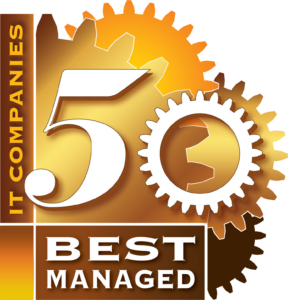
Why You Need to Keep Up With Canadian Government Cybersecurity Standards
Why You Need to Keep Up With Canadian Government Cybersecurity Standards
Are you familiar with the Canadian government cybersecurity standards?
For a lot of organizations in Canada today, there isn’t a required cybersecurity standard. There are regulations and standards for some industries, but for most organizations, there is no mandatory requirement to meet any kind of cybersecurity legislation or standards.
We think that’s going to change.
What Are the Canadian Government Cybersecurity Standards?
The Canadian government has started to develop a program that we believe will become a mandatory component at some point. In the beginning, it will probably be for dealing with the government, but at some point, your organization will be required to meet some kind of cybersecurity standard as a standard business practice.
They’re working with some very sophisticated standards and very in-depth standards that are already available. Certain industries or organizations are required to be compliant with those already, like ISO 27001, SOC 2, or NIST.
The Canadian government has looked at those standards and is saying that they can get about 80% of the benefit with about 20% of the work. They’ve put together a new standard that uses a subset of some of the existing standards. They’re taking the most beneficial components and developing a new standard.
We’re seeing that brought in now. You can have somebody come in and audit your system against that standard. And you can get a certificate that says you’re compliant.
There are a lot of benefits to aligning yourself with a standard. We’re expecting to see more suppliers and various organizations require compliance with an IT security standard to do business with them.
Given the way this is going, it may be wise to start to align yourself with one of those standards and be ready when the time comes.
Adopting a Cybersecurity Standard
When you think about adopting a cybersecurity standard, a lot of people think about just the technology side of things. But it’s really a lot more than just the technology. Obviously, you’re going to need good tools in place from an IT perspective. You need the right kind of equipment, the right firewalls, and the right kind of security software.
But the cybersecurity standards are more about procedures and processes. It’s more about having good policies and good procedures and being able to show that you’re following those.
You also need to be able to audit the procedures that you have. It’s really about a mindset. You need to think about technology and how you manage it and leverage it in your organization. And you need to be able to prove that you’ve thought it through and show that you have a plan in place for various different parts of IT.
You need to be able to show, for example, that you have a good backup and disaster recovery plan in place. You need to have a change management process in place if somebody going to make some changes in your infrastructure.
When you think about a standard, it has more to do with the processes than it does with the actual technology itself. And the benefit of being an early adopter is that it’ll be much easier to be compliant in the future.
Standardized Operating Procedures
There are some very real benefits to putting a standard in place and becoming compliant with it. It gives you peace of mind around your IT security. And ultimately, if you have a vendor that approaches you or a supplier that approaches you that requires you to be compliant in order to do business with them, it will be very quick and easy to take the audit and become compliant.
An IT security standard is really all about standard operating procedures.
- Do you have a documented method of doing certain tasks?
- Can you prove that that method is being followed?
- Is someone making sure that you’re following that method?
This way, you can make sure that everyone in your organization follows the same steps.
The flip side of this is everybody does things the way that they think is best. And the result, typically, is that doors might be left open and security risks are introduced by not having a standard procedure.
How CopperTree Can Help You Develop IT Standards
At CopperTree, our core business model is helping our clients achieve IT success. And part of that is developing IT standards that we audit our clients against on a regular basis.
We’ve developed our own standards. We’ve borrowed from a lot of the IT security standards that are out there, which are the same Canadian government cybersecurity standards in the works. And as we do our regular maintenance work and work with our clients on an ongoing basis, we are already implementing a framework that forms the kind of the foundation for an IT security framework to be adopted.
We’re already doing a lot of work behind the scenes with our clients to leverage IT security standards. But if you truly want to adopt them, we need to do more. More work needs to be done, particularly around the policies and procedures side of things.
It’s something that most organizations don’t really have the expertise to implement themselves.
Why You Need a Partner to Manage Canadian Government Cybersecurity Standards
As you look at how to implement these Canadian government cybersecurity standards, you’re probably going to need a partner of some kind. Somebody like CopperTree can come in and guide you down this path.

We can develop and implement some policies on your behalf. And then there are also some processes and procedures that we’ll need to develop in conjunction with your staff and that your staff will need to implement on a day-to-day basis.
If your organization is not required to be compliant with something like NIST or ISO or SOC 2, a good place to start might be the Cyber Security Canada Standard that’s been developed in the last couple of years. And that’s something that CopperTree can help you implement.
We will guide you through the process and take the lead on developing the processes and policies. We’ll implement the technology. And at the end of the day, the benefit to you is not just the certification, but also the peace of mind that your organization is as secure as it can be.



